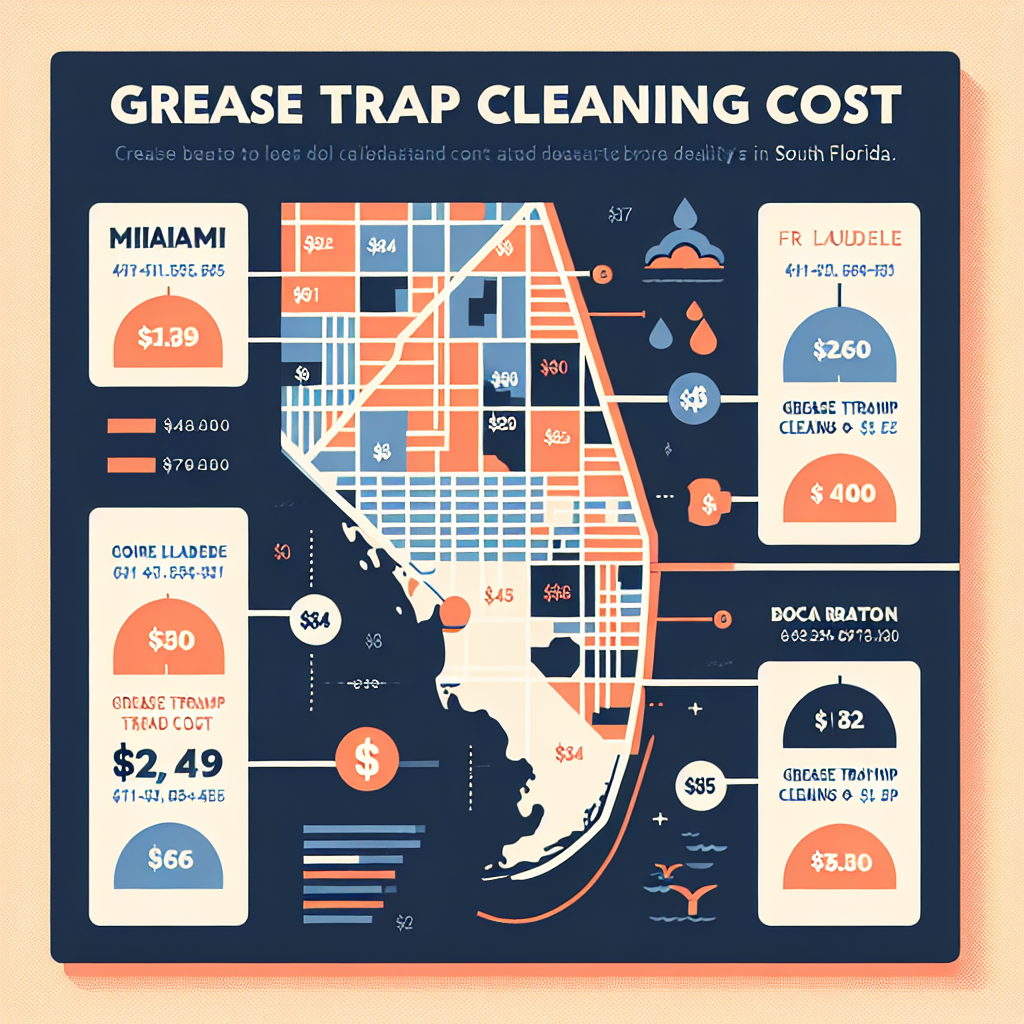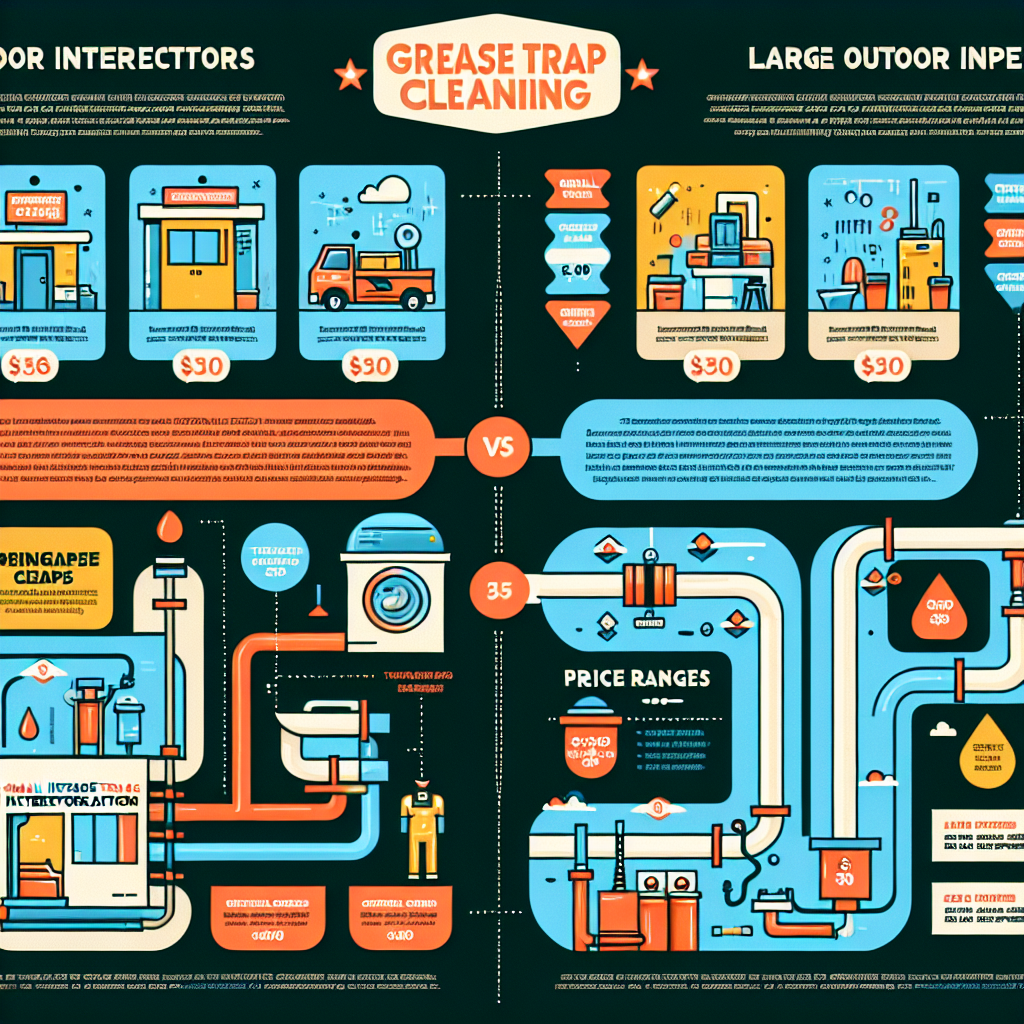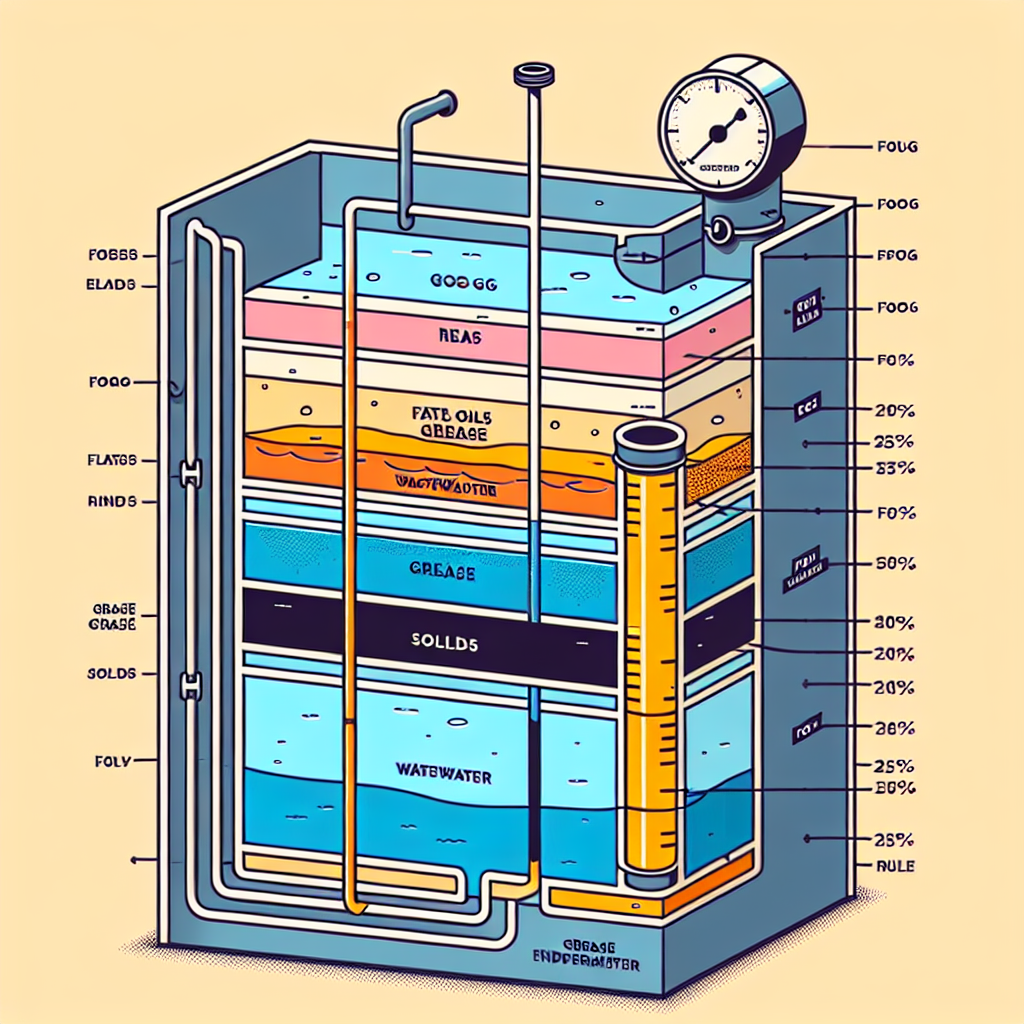How Often Should You Clean Your Grease Trap?
Complete guide to how often should you clean your grease trap? for South Florida restaurants.
We Handle Everything For You
We handle all the sourcing, negotiations, and logistics to find you the best grease trap service provider at the cheapest cost in your area.
How Often Should You Clean Your Grease Trap?
How Often Should You Clean Your Grease Trap?
Maintaining a clean grease trap is crucial for restaurant owners in South Florida to ensure compliance with local regulations and avoid costly penalties. This guide provides comprehensive insights into grease trap cleaning frequency, factors affecting the schedule, and city-specific compliance requirements for Miami, Fort Lauderdale, and Boca Raton.
Understanding Grease Trap Cleaning Frequency
What is a Grease Trap?
A grease trap is a plumbing device designed to intercept most greases and solids before they enter a wastewater disposal system. It is essential for preventing blockages and ensuring the smooth operation of kitchen plumbing.
How Often Should You Clean Your Grease Trap?
The frequency of cleaning a grease trap depends on several factors, including the size of the trap, the volume of grease produced, and local regulations. Generally, it is recommended to clean grease traps every 1 to 3 months. However, high-volume kitchens may require more frequent cleanings.
Factors Influencing Cleaning Frequency
City-Specific Compliance Requirements
Miami
In Miami, grease traps must be cleaned at least every 90 days or when the grease and solids reach 25% of the trap's capacity. The Miami-Dade County Department of Environmental Resources Management (DERM) enforces these regulations to prevent environmental contamination.
Fort Lauderdale
Broward County mandates that grease traps be cleaned every 90 days. However, restaurants with smaller traps or higher grease output may need monthly cleanings to comply with the Environmental Health Division's standards.
Boca Raton
Palm Beach County requires regular maintenance of grease traps, with cleaning schedules often set at every 90 days. The frequency can increase based on the trap's condition and usage patterns.
Steps for Effective Grease Trap Cleaning
1. Inspect the Trap: Regular inspections help determine when cleaning is necessary.
2. Remove the Lid: Carefully remove the lid to access the trap.
3. Measure Grease and Solids: Use a dipstick to measure the depth of grease and solids.
4. Pump Out Contents: Use a professional service to pump out the grease and solids.
5. Clean the Trap: Scrub the trap's interior to remove any remaining residue.
6. Document the Service: Keep records of all maintenance activities for compliance purposes.
Cost of Grease Trap Cleaning
Average Costs in South Florida
Factors Affecting Costs
Compliance and Penalties
Regulatory Compliance
Adhering to local regulations is crucial to avoid fines and business disruptions. Regular cleaning and proper documentation help maintain compliance with city and county requirements.
Penalties for Non-Compliance
Failure to comply with grease trap regulations can result in fines up to $5,000 in Miami-Dade County. Similar penalties apply in Broward and Palm Beach counties, emphasizing the importance of regular maintenance.
FAQs
How does a grease trap work?
A grease trap captures fats, oils, and grease (FOG) from wastewater, allowing cleaner water to flow into the sewer system.
What are the signs that a grease trap needs cleaning?
Signs include slow drainage, foul odors, and visible grease buildup.
How much does grease trap cleaning cost?
Costs range from $130 to $300 per cleaning, depending on location and trap size.
What are the penalties for not cleaning a grease trap?
Penalties can include fines up to $5,000 and potential business closures.
How often should restaurants in Miami clean their grease traps?
Miami restaurants should clean their traps every 90 days or when grease reaches 25% capacity.
What documentation is required for grease trap maintenance?
Records of cleaning dates, service provider details, and maintenance activities are required for compliance.
Conclusion
Regular grease trap maintenance is essential for South Florida restaurants to ensure compliance and avoid costly penalties. By understanding local regulations and maintaining a consistent cleaning schedule, restaurant owners can keep their operations running smoothly. For more detailed information on compliance, visit the [Miami-Dade County DERM website](https://www.miamidade.gov/environment/).
Related Internal Links
For expert grease trap services in South Florida, contact us today to schedule a consultation and ensure your restaurant remains compliant with local regulations.
Related Grease Trap Resources



Need Professional Help?
Get expert grease trap services with transparent pricing and same-day availability.
Get Free Quote